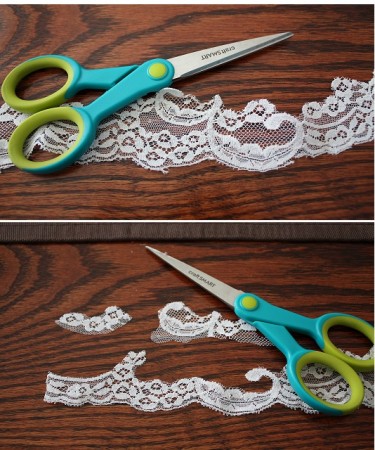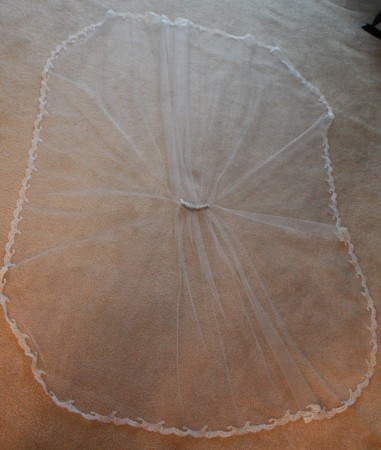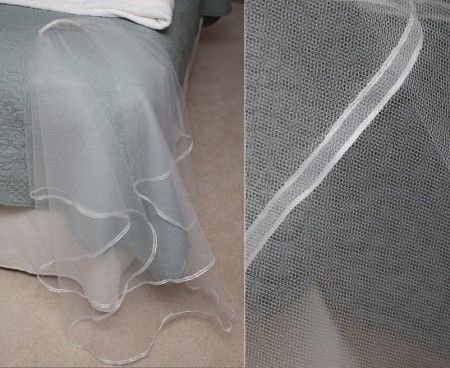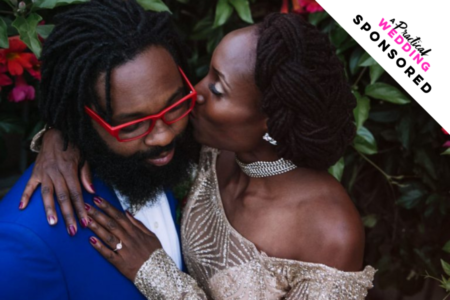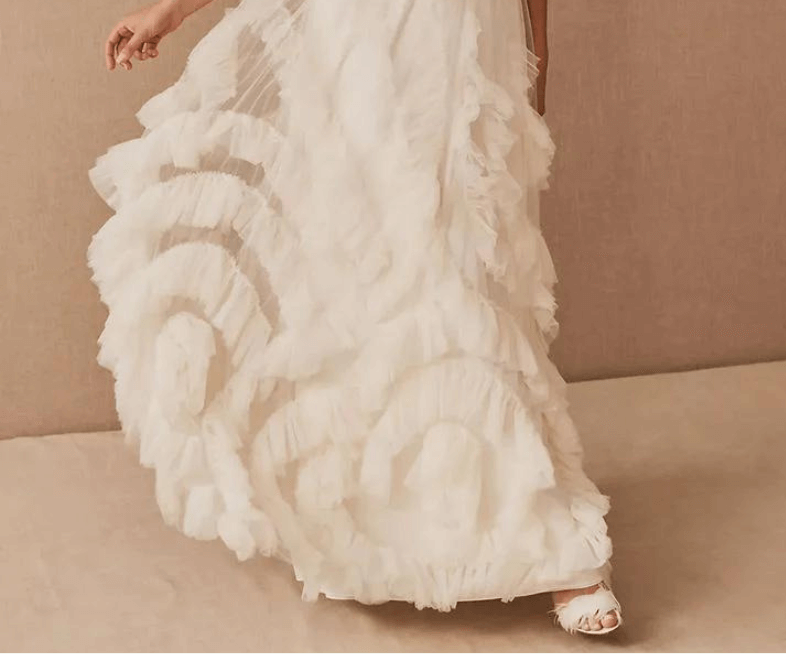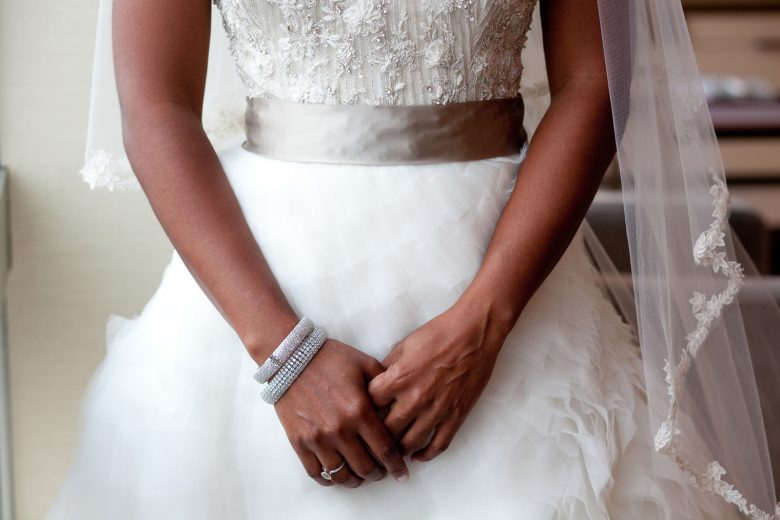
Let me start with some words of advice…
If you’re going to roll try to figure out how to make a DIY wedding veil, start early. Look, I love crafting, and I have some (limited) time to do it, and I really enjoy knocking out projects, but if I was trying to make this thing one month before our wedding, I would have lost it. The details are tedious, and totally boring. Sewing beads onto tulle? Aw-ful. But the end result is worth it.
Start with a good idea of what you want your veil to look like. The first trial veil that I made wasn’t based on anything other than the concept that trimming a veil with ribbon would be the easiest of all edging techniques. I like the trial veil, but it’s not quite as complete and inspired as I wanted my veil to be. I wanted the veil that I tried on in the bridal salon, trimmed with scalloped lace and accented with beading. I just didn’t want to spend $200 on it…it was that simple.
Use the good idea of what you want as a starting point, but don’t attempt to copy it 100%. I say that because 1) It’s probably going to be impossible to copy anything 100%…I’m convinced that either the veils out there are made by machines or are hand made by very, very talented people. And, 2) These people (or machines) have resources that you and I can’t access. I scoured the internet and the local fabric/craft stores for scalloped lace, but was unable to find exactly what I wanted. Mainly, that’s because I started wanting the exact same lace that was on my inspiration veil and it just doesn’t exist in the places that I can shop. I ended up buying lace from a shop on Etsy and trimming it down to the width that I wanted. It turned out far better than I could have ever imagined.
Be patient and don’t try to be perfect. This is my mantra in most everything that I craft. Look, there will be some beads askew, or you’ll forget to put on four beads and instead only have three in a certain spot. Or perhaps your tulle oval will be every so slightly “off”. No one will notice. Don’t let it drive you batty. The beauty of anything hand made is that it’s made from the heart and soul, and it’s not perfect. That’s what makes it awesome.
Supplies Needed:
- Tulle
- Nylon Thread (Micro-filament)
- Sewing Machine (optional, depending on your veil preference)
- Straight Pins
- Sharp scissors
- Sewing Needle
- Beads/Trim as desired
The Pattern – You’ll need to determine what style/length veil you want to wear (shoulder, fingertip, chapel, cathedral…). The best way to find the length that works for you personally is to drape the tulle over your head and fool around with it in front of a mirror (at least, this is what worked best for me). From there, you’ll need to cut an oval or a circle of tulle that is the appropriate length. I used 108″ wide tulle, cut it to my length, folded it in half, then in half again. Using a ton of straight pins to hold it all together, I carefully cut all of the corners off to make them round, and effectively created a giant rectangle/oval shape.
Since I needed/wanted a blusher, the oval shape worked very well for me (more on that later). If you don’t want a blusher and just want the veil in the back, you will only need a half oval/circle shape, unless you want two layers in the back.
The edging – I made two veils – one that was a mock-up version and had ribbon edging, the other which will be my veil that has a lace and beaded edge. You can go totally plain, add some beading, make a rolled edge – it really all depends on your patience level, your sewing skills, and most importantly, the look you’re after. Attach your edge trim with nylon thread using a sewing machine (if you don’t have one, look into borrowing one from a friend or any local sewing shops that will allow you to use theirs for free/nominal cost). If you’re applying lace or trim/ribbon to the edge of the veil with a sewing machine, make sure your sewing machine is capable of using nylon thread or “micro filament”. Otherwise you’ll end up with a lot of tears in your tulle. And, to be clear, the only reason I stress the nylon thread is because you can’t see it when it’s sewn…it really and truly disappears, which is exactly what you’ll want!
Gathering the veil – hand sew two rows of running stitch that are at the gathering point of your veil, leaving approximately 20″ on either side of the gathering point so you have some side veil action happening. Scrunch the tulle up on the gathering thread until the gathered portion is about 4″ long (assuming you’re attaching it to a 4″ comb. The wider your tulle is from the start, the more “poof” you’re going to end up with. Tie the thread into two knots on either side and trim down. Now you can work on your attachment head piece….
Fastening – I used a comb (but certainly bobby pins or clips or other such items could work). You can buy plain combs from any craft store that has wedding supplies/crafts, or from most beauty stores. I think, for veils, a metal comb works best to stay put in your hair, and allows you to attach things to it with wire or glue as you see fit (or, you can find one already decorated from a sundry of shops on Etsy). And Voila.







